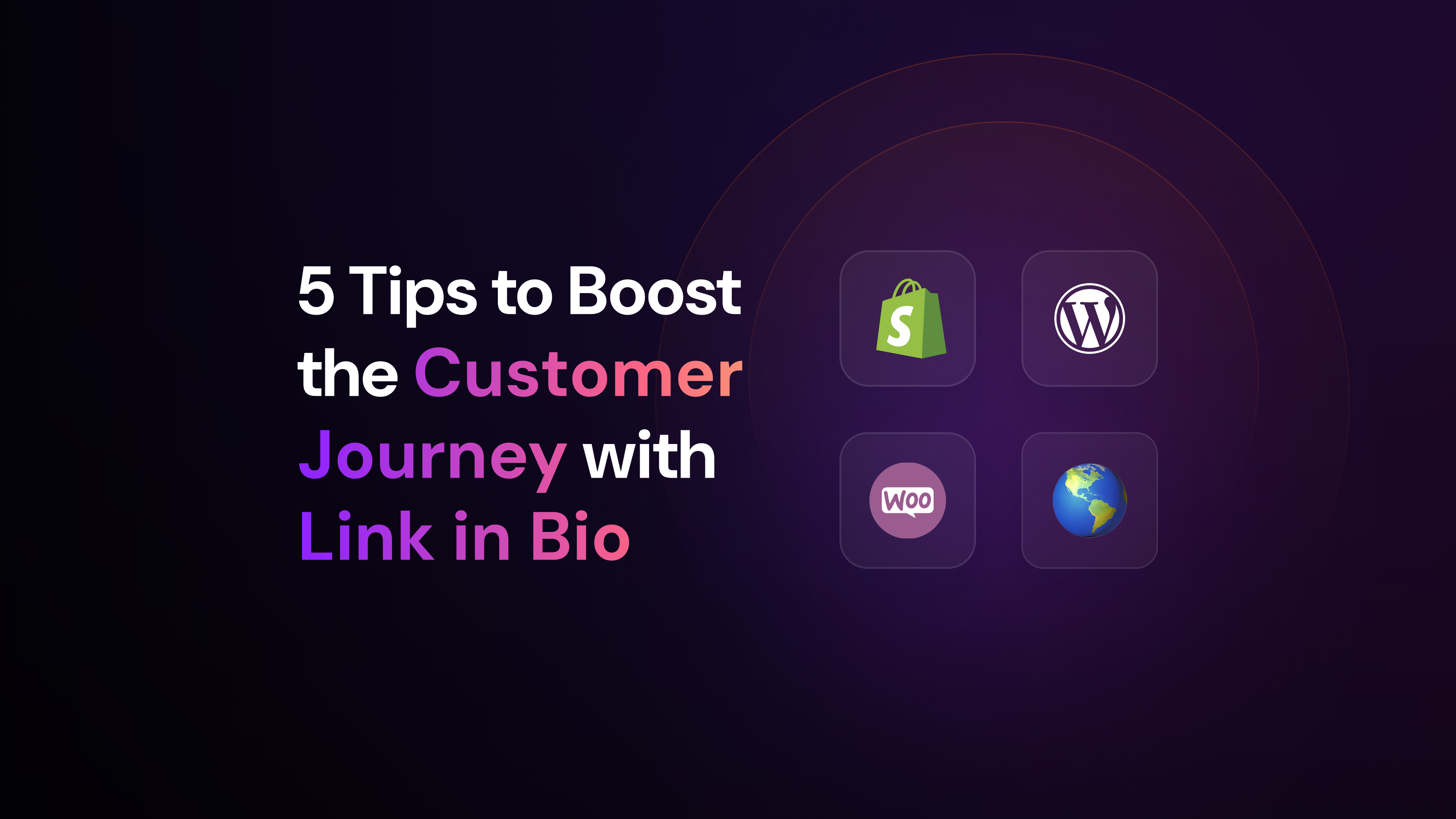Effectively collecting and using user data can transform how you engage with sports fans and optimize operations.
Here’s what you need to know about the benefits of collecting data in sports with and how it can drive your success.
How Do You Collect Data?
Integrating data collection tools into your existing systems is straightforward. These tools seamlessly connect with your current infrastructure, allowing you to start gathering valuable information without overhauling your setup. The integration process is designed to be user-friendly, ensuring minimal disruption to your operations. Learn more about the transition to first-party data collection and how it can benefit your organization.
- Automatically capturing data from multiple touchpoints is a game-changer. The importance of real-time audience data creates a deeper understanding of your fans. Whether it’s through your website, mobile app, or physical events, data collection tools gather information from every interaction point. This comprehensive approach ensures you don’t miss critical data, providing a complete picture of your audience’s behavior and preferences.
- Centralizing data in a unified platform for analysis simplifies the process of making sense of the collected information. Instead of juggling multiple data sources, you have all your data in one place. This centralization makes it easier to analyze trends, identify patterns, and draw actionable insights to drive your strategies forward.
- Applying AI and machine learning for advanced insights takes your data analysis to the next level. These technologies process vast amounts of data quickly and accurately, uncovering deeper insights that might be missed through manual analysis. AI can predict trends, identify anomalies, and provide recommendations based on the data, helping you make informed decisions.
- Visualizing data through customizable dashboards makes it easy to understand and act on the insights. Dashboards present data in a clear, visual format, allowing you to track key metrics at a glance. Customizable options mean you can tailor the dashboards to display the most relevant information for your needs, ensuring you always have the insights you need at your fingertips.
What Types of Data Should You Collect?
Understanding your fan base starts with collecting detailed fan data. This includes demographics and psychographics, which provide insights into who your fans are and what drives their behavior. Using a customer data platform (CDP) streamlines the data collection process.
- Demographics cover basic information like age, gender, and location, while psychographics delve into interests, values, and lifestyle choices. Together, these data points help create a comprehensive profile of your audience. By understanding the advantages of using a CDP, you can make informed decisions that drive your organization forward.
- Engagement metrics are another vital component. Tracking views, clicks, and shares allows you to measure how fans interact with your content. This data reveals what types of content resonate most with your audience, helping you refine your strategies to boost engagement. For example, if a particular type of video garners more views and shares, you can produce more of that content to keep fans engaged.
- Purchase history and preferences offer insights into the buying behavior of your fans. This data includes past purchases, frequency of purchases, and preferred products. Understanding these patterns enables you to tailor your marketing efforts, recommend relevant products, and create personalized offers that drive sales. For instance, if a fan frequently buys team merchandise, you can target them with exclusive deals on new arrivals.
Event Data
Event data collection focuses on the logistics and financial aspects of your events.
- Ticket sales and attendance figures provide a clear picture of event popularity and audience size. This data helps in planning future events, setting ticket prices, and managing seating arrangements. High attendance rates indicate successful events, while lower numbers can signal the need for improved marketing or changes in event format.
- Concession and merchandise sales data track revenue generated from food, beverages, and merchandise sold during events. This information helps identify best-selling items, peak purchasing times, and overall sales performance. For example, if a particular food item consistently sells out, you can increase its availability at future events to maximize revenue.
- Foot traffic and crowd flow data analyze how fans move through the venue. This includes entry and exit points, popular areas, and bottlenecks. Understanding these patterns helps optimize venue layout, improve crowd management, and enhance the overall fan experience. For instance, if certain areas experience heavy foot traffic, you can add more amenities or staff to those locations to reduce congestion. Consider alternative data collection methods in light of evolving privacy regulations.
Athlete Data
Collecting athlete data is essential for monitoring performance and health. Performance stats and metrics provide detailed information on an athlete’s performance during games and practices. This includes data on speed, distance covered, accuracy, and other key performance indicators. Coaches and trainers use this data to assess performance, identify areas for improvement, and develop targeted training programs.
- Biometrics and health data track an athlete’s physical condition and well-being. This includes heart rate, sleep patterns, injury history, and other health metrics. Monitoring these factors helps prevent injuries, manage recovery, and ensure athletes are in peak condition. For example, if an athlete’s biometrics indicate fatigue, adjustments can be made to their training schedule to prevent overtraining.
- Training and recovery data focus on the effectiveness of training programs and recovery protocols. This includes data on workout intensity, duration, and recovery times. Analyzing this information helps optimize training regimens, ensuring athletes get the most out of their workouts while minimizing the risk of injury. For instance, if data shows that an athlete recovers faster with certain recovery techniques, those methods can be incorporated into their routine..
How Can You Use Data to Personalize Fan Experiences?
If you’re wondering how to make your fans feel truly special, personalization is the answer.
Segment Fans into Cohorts
Segmenting fans into cohorts allows you to understand different groups within your audience. Start by identifying high-value fans who frequently engage with your content, purchase merchandise, or attend events. These fans are your most loyal supporters and can drive significant revenue. On the other hand, pinpoint at-risk fans who have shown a decline in engagement or spending. Recognizing these patterns early helps you take proactive measures to re-engage them.
Leveraging the data collected, tailor experiences to fan preferences. For high-value fans, offer exclusive content, early access to tickets, or special discounts. These personalized touches make them feel valued and appreciated. For at-risk fans, consider sending personalized messages or offers to reignite their interest. Understanding what each cohort values ensures your engagement strategies are effective and resonate with your audience.
Deliver Targeted Content and Offers
Based on the data insights, recommend relevant content and products. If a fan frequently engages with content about a specific player or team, tailor your recommendations to include more of that type of content. This keeps the fan engaged and increases the likelihood of their interacting with your platform. Similarly, if data shows a fan’s preference for certain merchandise, highlight those products in your communications.
Provide timely and contextual offers to enhance the fan experience. Use data to understand the best times to send offers, such as during a game or right after a significant event. Contextual offers, like discounts on merchandise after a team victory, feel more relevant and increase conversion rates. Tailoring your offers based on real-time data ensures they are well-received and effective.
Engage Fans Across Channels
Create seamless omnichannel experiences by integrating data across all touchpoints. Whether fans interact with your website, app, or social media, ensure they receive a consistent and personalized experience. Use data to track their journey across channels and tailor interactions accordingly. For example, if a fan starts a purchase on your website but doesn’t complete it, send a reminder through email or app notifications.
Foster community and peer-to-peer engagement by leveraging data insights. Identify fans who are highly active in discussions or frequently share content. Encourage these fans to engage with others by highlighting their contributions or creating opportunities for them to connect. Peer-to-peer engagement builds a sense of community and loyalty among fans. Use data to facilitate these interactions, such as recommending groups or forums based on their interests. Stay updated with the latest trends in customer engagement to enhance your strategies.
Using data to personalize fan experiences not only enhances engagement but also builds long-term loyalty. By understanding and catering to individual preferences, you create a more meaningful connection with your audience. This approach ensures fans feel valued and keeps them coming back for more.
What Are 5 Tips for Collecting Quality Sports Data?
Getting started with data collection can feel overwhelming, but these tips will help ease the process.
Define Clear Data Objectives
Start by setting clear data objectives that align with your business goals. Knowing what you want to achieve helps focus your data collection efforts. Are you looking to increase fan engagement, boost ticket sales, or improve team performance? Defining these objectives ensures that the data you collect is relevant and actionable. For instance, if your goal is to enhance fan engagement, focus on collecting data related to fan interactions, preferences, and feedback. This targeted approach saves time and resources while providing valuable insights that directly support your goals.
Ensure Data Accuracy and Consistency
Accurate and consistent data is the backbone of any successful data strategy. Implement data validation and cleansing processes to maintain high data quality. Validation checks ensure that the data collected meets predefined criteria, reducing errors and inconsistencies. Regular data cleansing removes duplicate entries, corrects inaccuracies, and updates outdated information. This process not only improves data reliability but also enhances the effectiveness of your analysis. For example, consistent data on ticket sales and attendance helps you accurately forecast demand and optimize event planning.
Respect Fan Privacy and Consent
Transparency and respect for fan privacy are paramount. Clearly communicate your data practices to fans and obtain their consent before collecting any personal information. This builds trust and fosters a positive relationship with your audience. Provide fans with control over their data by allowing them to update preferences or opt out of data collection. This approach not only complies with privacy regulations but also demonstrates your commitment to protecting fan rights. For instance, offering fans the option to customize their data-sharing settings can enhance their sense of security and loyalty. Navigate data privacy regulations to maintain fan trust and compliance.
Integrate Data Across Touchpoints
Integrating data across all touchpoints provides a unified view of your audience. Break down data silos by consolidating information from various sources such as websites, mobile apps, and physical events. This comprehensive approach ensures that you capture a complete picture of fan behavior and preferences. For example, integrating ticket sales data with engagement metrics from social media platforms can reveal patterns that help tailor marketing strategies. A unified data platform streamlines analysis and decision-making, enabling you to deliver more personalized and effective fan experiences.
Continuously Measure and Optimize
Regularly assessing data quality and value is key to staying relevant and effective. Continuously measure the performance of your data collection efforts and make necessary adjustments. This involves tracking key metrics, analyzing trends, and identifying areas for improvement. Adapt to changing fan needs and behaviors by updating your data strategies accordingly. For instance, if data shows a shift in fan preferences towards digital content, focus on enhancing your online engagement efforts. Continuous optimization ensures that your data remains valuable and actionable, driving better outcomes for your organization.
Is Collecting Sports Data Worth It?
You might still be on the fence about collecting sports data, but the benefits are clear.
Drive measurable impact on fan engagement and revenue
Collecting and analyzing sports data helps you understand what drives fan engagement. By identifying which content, events, or merchandise resonate most with your audience, you can tailor your strategies to increase interaction and satisfaction. This targeted approach not only boosts engagement but also translates into higher revenue through increased ticket sales, merchandise purchases, and premium content subscriptions. Learn how to measure the ROI of a CDP to ensure your investments are paying off.
Position organizations for long-term success in a competitive industry
In the competitive sports industry, staying ahead requires a deep understanding of your audience and operations. Data collection provides the insights needed to make informed decisions that enhance your competitive edge. By continuously analyzing performance metrics and fan behavior, you can adapt and innovate, ensuring your organization remains relevant and successful over the long term.
Enable agility and resilience amidst changing fan expectations
The importance of first-party data in maintaining this agility cannot be overstated. Fan expectations evolve rapidly, influenced by trends, technology, and social dynamics. Data collection allows you to stay agile and responsive to these changes. By monitoring real-time data, you can quickly identify shifts in fan preferences and adjust your strategies accordingly. This agility helps you maintain a strong connection with your audience, even as their interests and behaviors change.
Empower organizations to make confident, data-driven decisions
Data-driven decision-making removes the guesswork from your strategies. With accurate and comprehensive data at your disposal, you can confidently make decisions that align with your goals and audience needs. Whether it’s planning events, launching marketing campaigns, or developing new products, data insights guide you towards choices that are more likely to succeed.
Unlock new opportunities for innovation and growth
Data collection uncovers patterns and trends that might otherwise go unnoticed. These insights can reveal new opportunities for innovation and growth, such as untapped markets, emerging fan segments, or novel engagement strategies. By leveraging data, you can explore and capitalize on these opportunities, driving continuous improvement and expansion for your organization.
What Are the Benefits of Collecting Data in the Sports Industry?
When it comes to understanding your fans and boosting engagement, data is your best ally.
Gain deeper insights into fan behavior and preferences
Understanding your fans is key to keeping them engaged. By collecting data on their behavior and preferences, you can uncover patterns and trends that reveal what they enjoy most. This information helps you tailor your content and interactions to match their interests, making your engagement efforts more effective. For example, exploring trends in digital advertising can provide insights into how fan behavior has evolved.
Personalize fan experiences to drive engagement
Understanding what first-party data is can be foundational to creating these personalized experiences. Personalization goes a long way in making fans feel valued. With detailed data on individual preferences, you can create customized experiences that resonate with each fan. Whether personalized content, targeted offers, or tailored communication, these efforts can significantly boost fan loyalty and engagement.
Optimize event operations and logistics
Data collection isn’t just about fans; it also helps streamline your event operations. By analyzing data on ticket sales, attendance, and crowd flow, you can optimize logistics to ensure smooth and efficient events. This can lead to better crowd management, reduced wait times, and improved fan experience.
Identify new revenue opportunities
Data can reveal untapped revenue streams. By analyzing purchasing behavior and engagement metrics, you can identify opportunities for upselling, cross-selling, and creating new products or services. This can lead to increased revenue and a more robust financial performance for your organization. Discover successful use cases to see how other organizations have leveraged data for revenue growth.
Improve athlete and team performance
Collecting data on athlete performance and health metrics can provide valuable insights for coaches and trainers. This information can help in designing better training programs, monitoring recovery, and making informed decisions on player management. Ultimately, this can lead to improved team performance and better outcomes on the field.
Ready to Collect Valuable Data and Insights With Arena?
Arena offers the tools you need to collect, analyze, and leverage data effectively. Our platform integrates seamlessly with your existing systems, capturing data from multiple touchpoints and centralizing it for comprehensive analysis. Explore the potential of the metaverse to stay ahead in the ever-evolving digital landscape.
With AI and machine learning, you gain advanced insights that drive engagement, optimize operations, and uncover new revenue opportunities.
Don’t miss out on the chance to elevate your fan engagement and operational efficiency. Visit Arena’s pricing page to explore our plans and see how we can help you achieve your goals. Sign up now and start creating unforgettable, personalized experiences for your fans.



